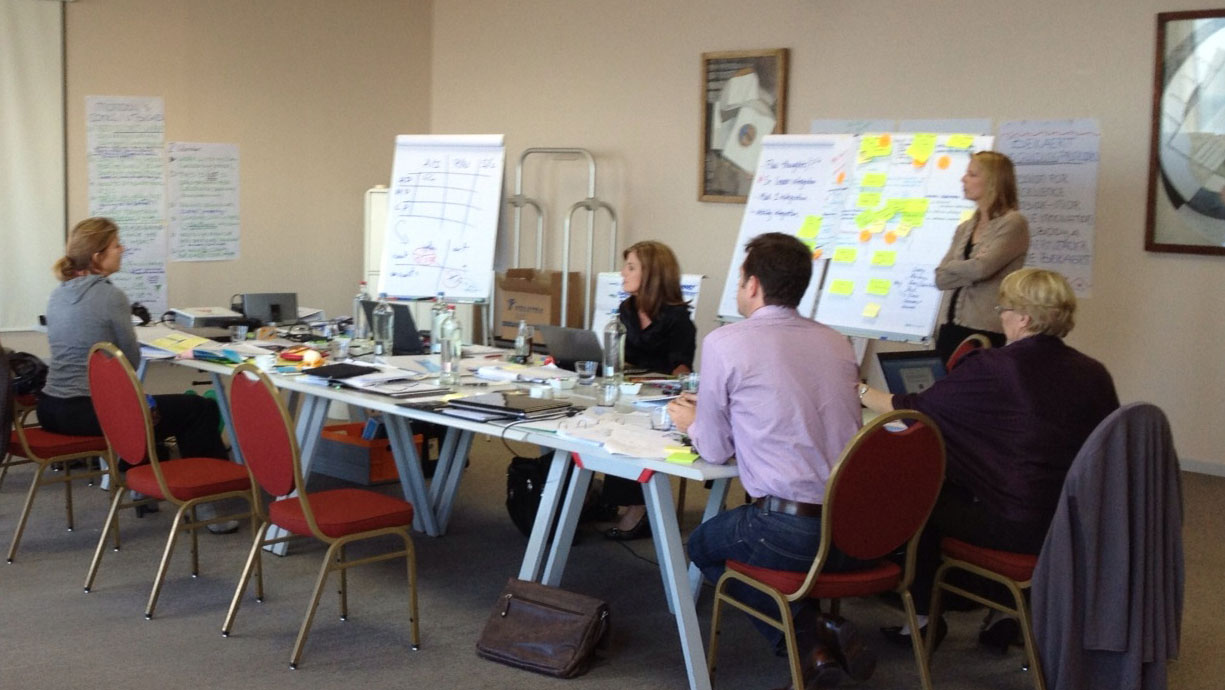
04 Aug Strategies for Flawless Facilitation
As defined by Webster’s, “facilitate” means “to make easier: help bring about.” When we use facilitation skills in meetings or events, we use a process and set of skills to help people work together better, to help people learn more easily, or to help people reach a desired outcome and achieve their goals. Review the following tips for effective facilitation the next time you are asked to facilitate.
In The Beginning… As with presentations and even writing, knowing who your audience is critical to being effective. Before the meeting or event, take time to understand your audience and their desired outcome. What are their objectives and goals? At the start of the meeting or event, again get to know who you are working with. Try polling to get a feel for the audience–their age, where they live (especially with national and international audiences), their experience level with the topic of discussion, etc.
Next, clearly define your role for the group. According to Roger Schwarz, “a facilitator’s role is to help the group improve its process in a manner consistent with valid information, free and informed choice, and internal commitment to choices.” Your role as a facilitator may include modeling effective behavior, staying neutral, not evaluating or contributing ideas, focusing the energy of the group on the task or topic, making sure everyone has an opportunity to contribute, helping the group resolve conflict and reach decisions, and patiently providing support and encouragement.
Finally, clearly define their roles, the agenda, the process, the outcome you are working towards, and the ground rules. Ground rules may include:
- Honestly express your thoughts.
- Focus on issues and key facts, not persons.
- Discuss non-discussible issues.
- Test each other’s leaps of abstraction/inferences.
- Balance inquiry and advocacy.
- Hear with respect what others have to say.
In The Middle… There are many things you as a facilitator can do to encourage participation during the meeting or event. Try different brainstorming techniques, ask open-ended questions (and wait for an answer!), ask for different points of view, list pros and cons, use forced-association techniques, etc. While these are more straightforward techniques, there are several more subtle facilitation skills you can use to encourage people to contribute such as using eye contact, giving positive reinforcement (both verbal and non-verbal), and demonstrating that you value each individual’s ideas and opinions. Additionally, make sure you listen for both content and feelings, monitor assumptions, and periodically ask the group to summarize their understanding.
Every so often, we have difficult participants in meetings or events. What can you do to manage these challenging behaviors? Try a few of these techniques: ask closed-ended questions, ask for a link to the topic to reframe or refocus the discussion, refer to the ground rules, cue the person with non-verbal cues, or use reflecting statements to acknowledge the person’s feelings.
In The End… At the end of your meeting or event, ask yourself (and the group) if you helped the group reach their desired outcome. Is there an action plan in place? How will the group follow up and how will you follow up? Effective facilitation isn’t just showing up, leading a meeting, and leaving. You have a responsibility to ensure that the issues raised are translated to actionable items and that the group is ready to move forward whether it be to take action on a business issue or simply to expand the mind to think in a new or different way.

